In college, I worked in a french bistro that served cassoulet, and I remember our clientele were always impressed at our traditional presentation of the dish. Out of this experience, I formed the opinion that true cassoulet includes duck legs, white beans, and some kind of sausage. In my research to find the perfect cassoulet recipe to make on my own, I learned that there are a lot of opinions out there about how to make traditional cassoulet.
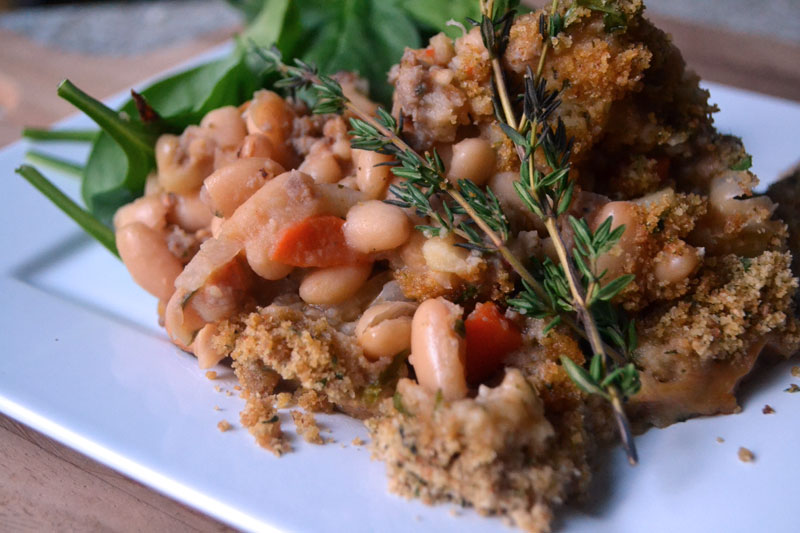
Essentially it’s all about location. This was a stew made by peasants, and the peasants used the ingredients they had readily available to make a slow cooked hearty stew. For one region, this meant a particular variety of spicy sausage. For another region this may have meant duck legs or duck fat, and so on. Over time, different recipes built on the older ones, combining them and creating something of a cassoulet canon. Ask one person and they’ll say you absolutely must have duck confit; ask someone else and they’ll swear the key ingredient is pork belly. After some research, I settled on some (mostly) common ingredients across all cassoulet recipes:
cannellini beans
duck or pork – the duck ingredient could be duck confit, duck sausage, or duck fat, and the pork might be pork belly, or spicy pork sausage. Many recipes include 2 or 3 of these meats all in the same stew.
chicken broth
fresh herbs – bay leaf and thyme are must haves
tomato (fresh, canned, or paste)
carrot
onion
time – be ready to cook for a few hours
But there’s a whole other way to look at cassoulet. This is a peasant dish and the point is to make it with the ingredients you have on hand, just like the peasants who created it in the first place. Going to the butcher for duck legs or hunting down Toulouse sausage in a specialty foods shop just doesn’t really capture the essence of the dish. So in the end, I resolved to make the best approximation I could muster with the ingredients I could find in my supermarket. I settled on a recipe by Real Simple that fit my needs.

I decided to experiment with cooking mise en place for this recipe. This literally means “putting in place” and it’s a technique in which you prepare all of your ingredients ahead of time, so the actual cooking is just a matter of adding that bowl of chopped garlic, or that handful of fresh thyme at the appropriate moment. Pictured above: all of my cassoulet stew ingredients, minus my spicy pork sausage which was browning while I snapped this photo.
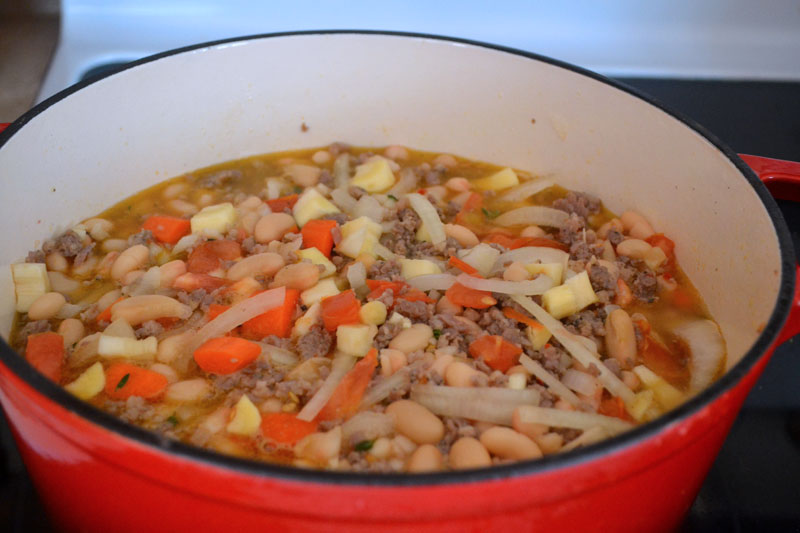
First steps: brown the sausage, add everything else, bring to a boil, and cook for at least an hour. I’m sure you can’t tell from the pictures, but I actually used a combination of great northern and cannellini beans. My grocery store actually ran out of cannellini beans, so I resolved to make do with the great northerns. Or so I thought.
The day before my cassoulet adventure, I happened to be visiting the proprietor of a coffee, tea, and gourmet food shop where I worked in high school. Knowing that he’d have some insight for me, I asked my old boss, Frank, if he’d ever made cassoulet.
“Oh, sure,” he said.
“Got any opinions?” I asked.
“You’ve got a dutch oven, right?”
“Yes I do! What are your thoughts on duck or pork or sausage?”
“Yes to all,” he told me, “but the really important thing is you have to use cannellini beans.”
“I wanted to, but the store didn’t have any.” I frowned.
“Well as luck would have it...” he walked to the back of the store and emerged with a single can of cannellini beans and deposited it in my greedy hands.
And that is the story of how I found some cannellini beans for my cassoulet. As a side note, if you’re ever anywhere near Alexandria, VA make sure you visit Old Town Coffee, Tea, and Spice on South Union street. Try the jasmine dragon pearls tea and ask Frank for his advice on french cooking.
And back to the dish, itself:
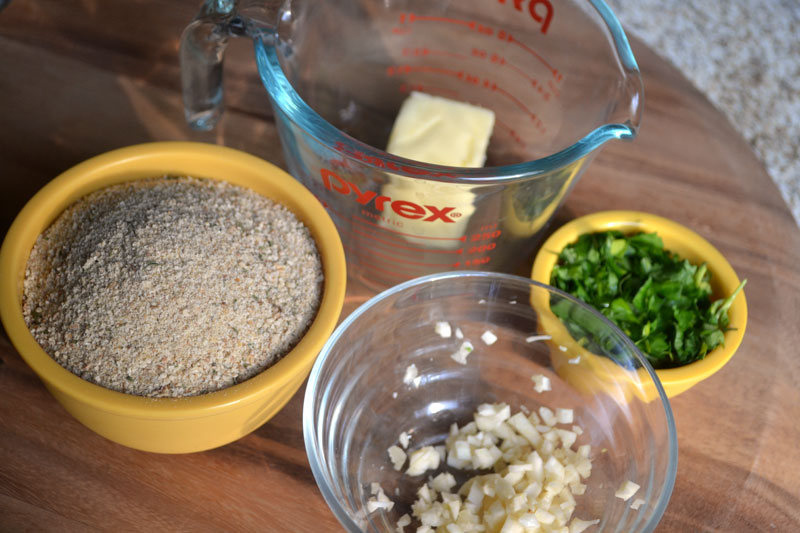
After what turned out to be more like an hour and twenty minutes, my cassoulet had finally reduced. (I got overzealous and added more than the called for 1-1/2 cups of chicken broth, but I maintain the extra liquid and extra cooking time served me well).
The next step is really fun. Cover your cassoulet in a mixture of garlic, parsley, melted butter, and bread crumbs and bake for 15 to 20 minutes, until it forms a browned, crispy crust.
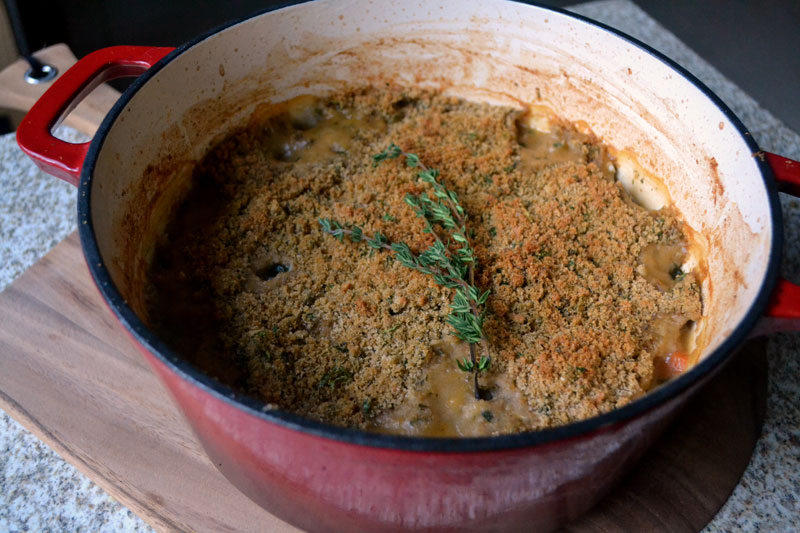
It will look glorious when it comes out of the oven.
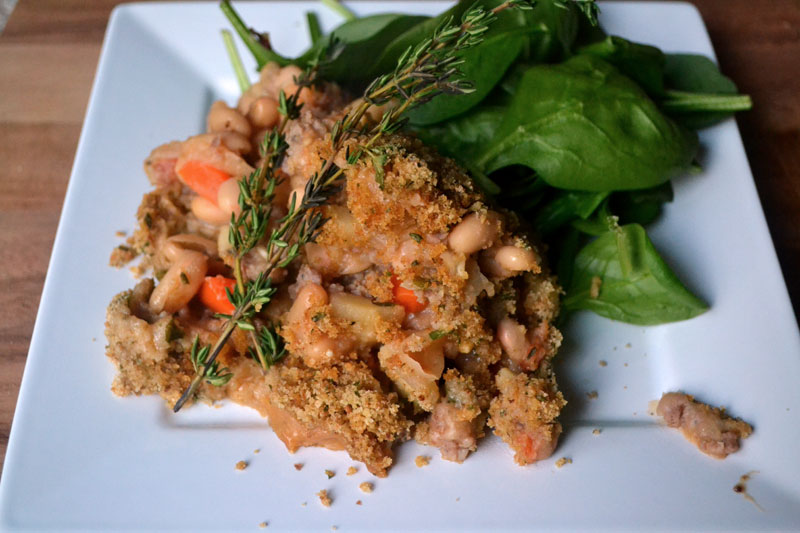
Serve with something light, preferably a green. The cassoulet will be heavy, hearty, and good for the soul. This batch fed me, my two roommates, and four house guests with enough leftover for my lunch the following day. I think I’ve found my new favorite cold weather cure…
[addtoany] Yum
